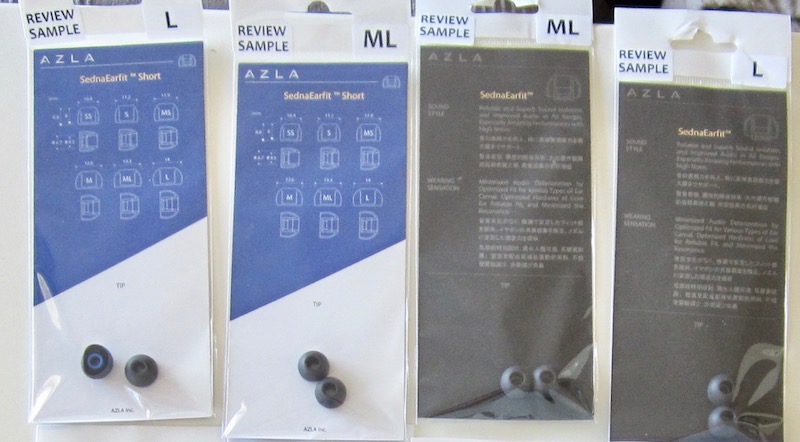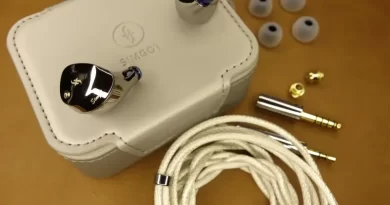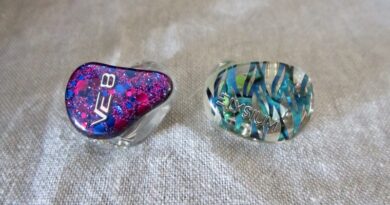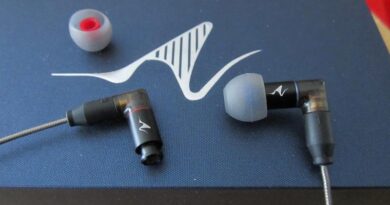The Iconic AZLA SednaEarfit Silicon Tips – Is Their Price Justified?

The answer will surprise you…it also surprised me.

AZLA SednaEarfit eartips out of Gangnam, Seoul, are very popular in Asia. In the west, audiophiles put in great efforts to order them from Japan. Only recently have they been available in North America on amazon.com: 2 pairs for $14.99 plus tax. The question is: are they worth their price? My answer from a consumer’s perspective: I didn’t know when starting this article but there is a definitive and somewhat surprising answer. Be aware: this article is not about value (quality for the cost). I have yet to test the SednaEarfits extensively in real life situations to comment on that. No, this article is about the research & development and production cost that went into the eartips, which may cause their price to be high.

When Apple introduced their iphone in mid 2007, they also released accessories, for example a fitting case. Many of these accessories probably cost pennies to produce and sold at $30-40 each. A cash cow for the company. Printer manufacturers sell their hardware cheaply knowing that the consumer relies on their proprietary ink cartridges. You quickly put ink for several hundred $$$ into a $89 printer. When you count your cartridges, a litre of ink cost you somewhere around $3500. That’s insane. Nevertheless it appears that we consumers have been brainwashed enough to accept these crazy prices for accessories.


Then came aliexpress, gearbest etc. who offered such accessories at a fraction of the price of the original. Admittedly, I have yet to find an iphone case that is as good as the “brandnames” in the Apple store, but hey, they are typically good enough. And then these Asian sellers started carrying earphones, now dubbed Chi-Fi, that rose from cheap and crappy to good and still reasonably priced. These Chi-Fi products were accompanied by manufacturers supplying accessories and eartips. While many of these are no-name, two eartips manufacturers in particular have made a name for themselves. One of them, SpinFit, out of Taiwan, provides a variety of nicely coloured and swivelling narrow bores, which have been widely available around the world for some time. The other, more cryptic one, is Azla out of Korea (ok, there is also JVC with their Spiral Dots…).


I had approached AZLA and asked them for some review “samples” [I guess you can call an eartip a “sample”] and received a pair of each of their four different designs [in M and ML]…I am lazy and have not done much with them yet. But I had the chance to communicate with the company’s founder Ashulley. And he gave me a bit of inside which I would like to repeat in my own words.

Ashulley used to work for Iriver and was involved in establishing Astell&Kern. After some local industry shifts, he left and established his own business in 2014. He spent some time researching until he had developed the first AZLA earphone in 2017 — and the first SednaEarfit tips simultaneously.


For the development of the AZLA earphones, almost 800 molds of Koreans between 17 and 53 were collected. The earphones were developed based on this dataset. The simultaneously developed SednaEarfits are based on 33 metal molds. The production process for the tips is complex and elaborate, and only high-quality materials are used. The total initial investment was in the hundreds of thousands of $$$ before one item was sold. The SednaEarfits and all other AZLA products are exclusively produced in Korea. “Made in Korea” is probably as pricy as production in the USA or Germany…and certainly much higher than in China (even German manufacturer Sennheiser produces some of their gear in China). SednaEarfit are the only tips manufactured in Korea.

The ultimate goal was to produce a good product, claims Ashulley.

The result: SednaEarfits are so popular that they are almost always sold out. People praise them and the discrepancy of high request and short supplies resulted in a cult status among earphone aficionados. Chinese dealers and Hong Kong and Japanese distributors soak up the stock so that the SednaEarfits are constantly on back order — and only the fewest make it out of Asia. And word went around with premium earphone manufacturers so that you may find some SednaEarfits bundled with your latest purchase.

In summary, the price of the SednaEarfits is dictated by high R&D costs in a high-price production environment (which produced a prosperous, democratic society). And to cut a long story shore, the price of the SednaEarfit IS JUSTIFYING ITSELF as the stock is permanently sold out. The customer spoke. Bingo!


Oh, and I owe you my listening impressions with the SednaEarfits…and whether “Made in Korea” tips harmonize with my “Made in Germany” ears…maybe I should send Ashully an imprint of my flappers. Sound impressions coming later in the season. Co-blogger KopiOkaya claims the SednaEarfits work particularly well with the Tinaudio/Tin Hifi T2…will have to test that.

Keep on listening!


FURTHER READING
Tweaking Tips – A Simplified Guide To IEM Silicone Eartips by KopiOkaya (2020-03-24)
Announcing The Premium Eartips Project by Jürgen Kraus (2019-10-01)
The Flip Tip: Creating Big Widebore Tips From Reversing Starlines by Slater (2019-09-16)
You find an INDEX of our most relevant technical articles HERE.











I have been using AZLA SednaEarFit tips for many years. I usually bought them from Amazon.jp. I find them to be particularly effective in smoothening the treble-ly Tin Hifi T2 and the very treble-ly Tin Hifi T2 Pro. They don’t wow me as much when I paired them with Tin Hifi T3. However, I have found a great candidate for SednaEarfit – the BLON BL-03. Due to its slightly longer-than-average stem, SednaEarfit works incredibly well with BLON. It tighten and cleaned up the bass of the BL-03.
The AZLA SednaEarfit will ALLOWS be in my assortment of eatips, together with JVC Spiral Dot, SpinFit, Acoustune, Final Audio, Canal Works, Ortofon, Radius, Symbio Mandarin, Sony Hybrid and Comply, etc.